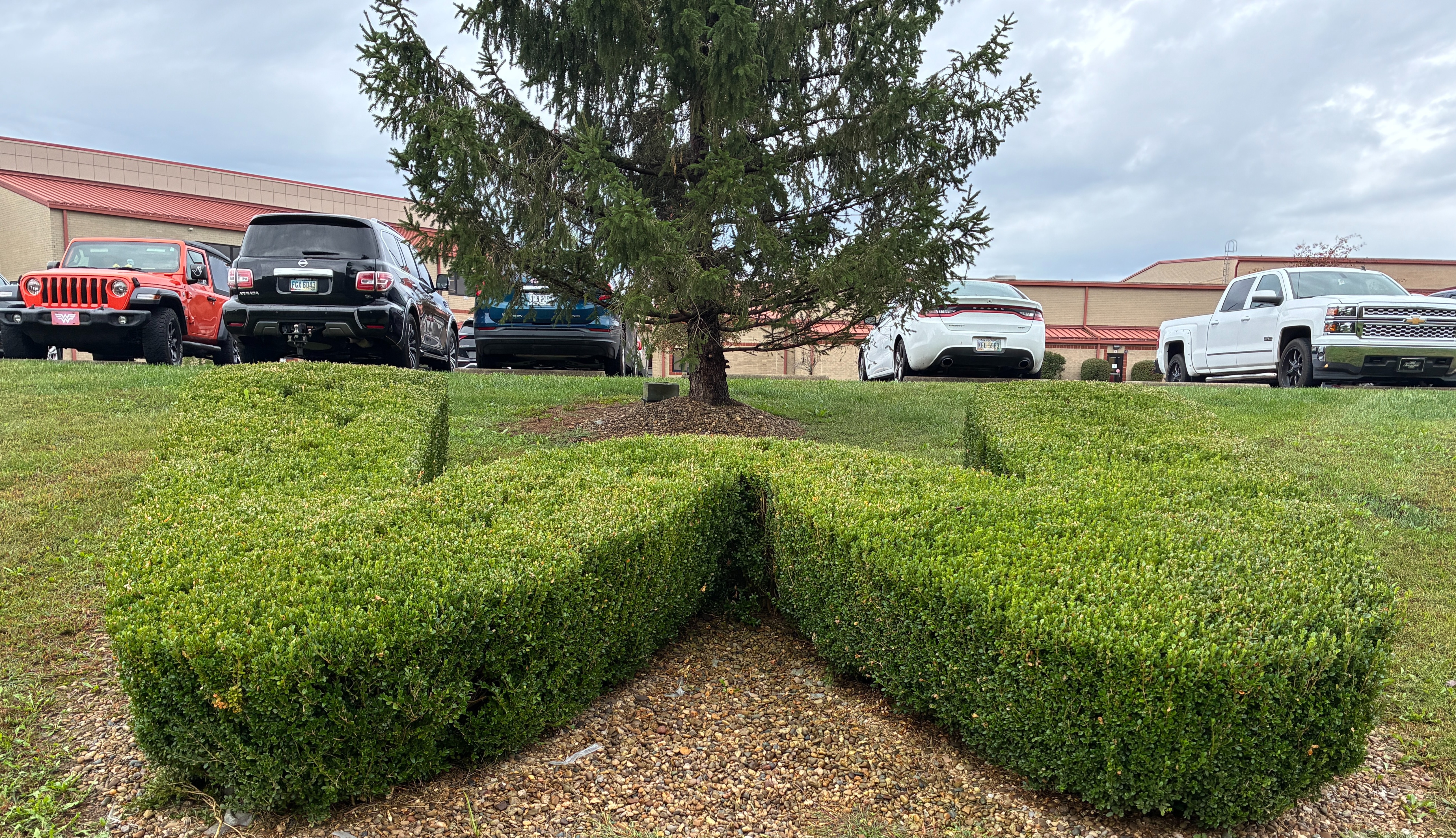
Photo Credit: Dr. Loretta W. Harvey
Scientific Name: Buxus sempervirens
Common Name: Common Boxwood, Common Box, European Box
Type: Evergreen shrub
Family: Buxaceae (Boxwood Family)
Native Range: Europe, Asia, and Africa
USDA Zone: Generally 5 to 8
Height: 5 to 15 feet
Spread: 5 to 15 feet
Bloom Time: April to May
Bloom Description: Inconspicuous, small, greenish-cream or pale yellow-white flowers in axillary clusters.
Sun: Full sun to part shade (Prefers part shade, especially afternoon shade in hot climates)
Water: Medium (Prefers evenly moist, well-drained soil)
Maintenance: Medium (Generally low-maintenance, but requires pruning for formal shapes/hedges)
Leaf Type/Shape: Simple, opposite, evergreen. Typically small (1/2" to 1 1/2" long), oval to elliptic or oblong with smooth margins. Dark glossy green above, yellowish-green below.
Attracts: Bees and other pollinating insects
Other Info: All parts of the plant are toxic if ingested by humans and animals.
Tolerate: Rabbit, Deer, Full Shade, variety of soil pH (slightly acidic to alkaline), drought (once established).
Invasive: No
Climate: Generally hardy in USDA Zones 5 to 8. Full sun to part shade. Prefers evenly moist, drained soil.
Noteworthy Characteristics: Dense, multi-stemmed, evergreen foliage provides year-round color and interest. Highly valued for its ability to withstand heavy pruning and shearing, making it excellent for formal hedges, borders, and topiary. Boxwood has a very long history of cultivation, dating back to 4000 BC. Young stems are often square in cross-section.
Problems: Boxwood blight (serious threat), Volutella blight, leaf spot, root rot (in poorly-drained soil). Insect Pests include Boxwood leaf-miner, boxwood mite, boxwood psyllid, box tree moth. Foliage can "bronze" (turn brownish-yellow) in winter when exposed to full sun and cold, harsh winds. Susceptible to winter damage.
Economic Uses: Extensive use in the ornamental plant sector for landscaping, including hedges, borders, foundation plantings, accent plants, and topiary. It is one of the top-selling woody ornamentals. The fine-grained wood has historically been used for musical instruments, carving, and boxes (hence the common name). Historically, extracts have been used in medicine, but the whole leaf is considered UNSAFE and POTENTIALLY DEADLY if ingested.
Donated by:
In memory of:
Date Planted:
Arboretum Catalog Number: 0002
Photo Credits: Dr. Loretta W. Harvey

